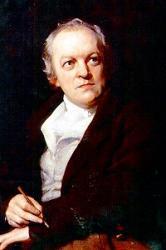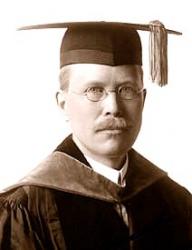Planning worship?
Check out our sister site, ZeteoSearch.org,
for 20+ additional resources related to your search.
- |
User Links
Person Results
George J. Elvey

1816 - 1893 Person Name: G. J. Elvey Composer of "BLAKE" in The Riverdale Hymn Book George Job Elvey (b. Canterbury, England, 1816; d. Windlesham, Surrey, England, 1893) As a young boy, Elvey was a chorister in Canterbury Cathedral. Living and studying with his brother Stephen, he was educated at Oxford and at the Royal Academy of Music. At age nineteen Elvey became organist and master of the boys' choir at St. George Chapel, Windsor, where he remained until his retirement in 1882. He was frequently called upon to provide music for royal ceremonies such as Princess Louise's wedding in 1871 (after which he was knighted). Elvey also composed hymn tunes, anthems, oratorios, and service music.
Bert Polman
George J. Elvey
William Blake

1757 - 1827 Author of "Little Lamb, Who Made Thee?" in The Cyber Hymnal Blake, William, poet and painter, born 1757, and died 1827. Published Songs of Innocence in 1789, in which appeared a poem in 9 stanzas of 4 lines beginning. "Can I see another's woe" (Sympathy), and headed "On Another's Sorrow." (See also The Poems of William Blake, &c, Lond., W. Pickering, 1874, p. 105.) This poem is repeated in Martineau's Hymns, &c, 1873, and others.
--John Julian, Dictionary of Hymnology, Appendix, Part II (1907)
====================
Blake, William, p. 1553, ii. Another poem from his Songs of Innocence is "To Mercy, Pity, Peace and Love." In 1789 ed., p. 17, it is entitled "The Divine Image." The English Hymnal, 1906, No. 506, ranks it among General Hymns. It is certainly difficult to call it a hymn at all, or to assign it to any special purpose. [Rev. James Mearns, M.A.]
--John Julian, Dictionary of Hymnology, New Supplement (1907)
William Blake
Geoffrey T. Shaw
1879 - 1943 Person Name: Geoffrey Shaw Composer of "THE LAMB" in The Church and School Hymnal
Geoffrey T. Shaw
Grace Wilbur Conant
1858 - 1948 Composer of "[Little lamb, who made thee?]" in Songs for Little People Pseudonym: A. B. Ponsonby.
Born: September 9, 1858, Boston, Massachusetts.
Died: April 7, 1948, Malden, Massachusetts.
Grace remained single all her life. Her middle name was her mother’s maiden name. She served as musical editor for the Kindergarten Review for at least six years, starting in 1908. Her works include:
Songs for Little People, with Frances Weld Danielson (Boston, Massachusetts: The Pilgrim Press, 1905)
Worship and Song, with Benjamin S. Winchester (Pilgrim Press, 1913)
Religious Dangers of Modern Tendencies in So-Called Religious Songs, 1917
Song and Play for Children, with Frances Weld Danielson (Pilgrim Press, 1925)
--The Cyber Hymnal
Grace Wilbur Conant
Jeremiah Franklin Ohl
1850 - 1941 Person Name: J. F. Ohl Composer of "[Little lamb, who made thee?]" in The Children's Hymnal and Service Book
Jeremiah Franklin Ohl
Lindsay B. Longacre

1870 - 1952 Person Name: L. B. L. Arranger of "BLAKE" in The Riverdale Hymn Book Lindsay Bartholomew Longacre was born in Pottsville, Pennsylvania, on January 26, 1870, the son of Orleans and Rachel (Bartholomew) Longacre. Longacre wanted to become a musician, but pursuant to his father’s wishes, he attended the Columbia University School of Mines and was graduated from there with a degree in mining engineering in 1892. Following a call to the ministry, he attended Drew Theological Seminary, where he received a B.D. degree in 1896, and was subsequently ordained a minister in the Methodist Church that same year.
From 1896-1910, Rev. Longacre served several small churches in the New York Conference.
These included Glenville, St. Luck, Madison Avenue (later called Christ Methodist after a move to a new location), Fifty-Sixth Street Church, Morris Heights, and Woodlawn Heights. His pastorate at Madison Avenue Church was as the Assistant Pastor to Andrew Longacre, his uncle.
In 1910, Dr. Longacre was appointed head of the Department of Old Testament Literature and Religion of the Iliff School of Theology. He held that position for 32 years. On several occasions during his tenure at Iliff, Dr. Longacre also acted as president of the school. He authored four books, a number of articles, and church school curriculum. His books are: A Prophet of the Spirit: A Sketch of the Character and Work of Jeremiah (1917 and 1922); Amos, Prophet of a New Order (1921; translated into Burmese in 1939); Deuteronomy, A Prophetic Lawbook (1924); and The Old Testament: Its Form and Purpose (1945). He was invited to submit three articles to the Abingdon Bible Commentary(1929). These articles are entitled “The Bible as Literature,” Numbers,” and “Joshua.” Dr. Longacre also held membership in the National Association of Biblical Instructors and the Society of Biblical Literature and Exegesis.
During his tenure at Iliff, Dr. Longacre was involved in a controversy known as the “fundamentalist-modernist controversy.” This controversy, which reached its height in the 1920s, grew out of reactions to the liberal approach that the school had taken toward religion and education. These reactions, from both inside and outside the Methodist Church, were in response to the school’s use of higher criticism in the teaching of Biblical studies.
While at Iliff, Dr. Longacre also taught courses in preaching, worship, and hymnology. He had nurtured his love for music as an avocation, and wrote many hymns and songs. Some of these hymns were published in The Riverdale Hymn Book (1912), The Methodist Hymnal (1935), The Hymnal (Evangelical and Reformed Church) (1941), and The Story of Our Hymns: The Handbook to the Hymnal of the Evangelical and Reformed Church (1952). He believed that great hymns were “God-centered.” In addition to composing music, he wrote explanatory notes for various Denver Symphony programs, and had a special love for opera. He also held membership in the Hymn Society of America, the American Guild of Organists, and the Quill Club of New York.
In his courses on worship, Dr. Longacre expected no loess that excellence from his students in planning and leading services. He felt that worship should be be “truly theocentric.” Because of his interests in music and worship, he served on the Commission on Ritual and Orders of Worship of the Methodist Church from 1940-44. The Commission produced a new Book of Worship for Church and Home. Dr. Longacre contributed introductory sentences to accompany selected readings in two sections: “Scriptures for Reading and Meditation” and “Daily Readings and Prayers for a Month.”
Dr. Longacre retired from Iliff in 1942. He and Florence Biggart Longacre, his second wife of six years, then made a brief move to California. (His first wife, Arabella Hyland Longacre, had passed away in 1930.) After returning to Denver, he played a leading role in the 1944 University of Denver production of Thornton Wilder’s Our Town. It was his first acting experience. That same year, the Longacre’s returned to New York City to pursue his interest in music and the arts through the cultural activities of the city. From 1947-1952, Dr. Longacre served as the Assistant Pastor to the Rev. Ralph W. Sockman of Christ Methodist Church.
Dr. Lindsay B. Longacre died at the age of 82 years on September 18, 1952, after a long and distinguished career of service to the church and humanity.
© 2002. Marshall Eidson
http://www.iliff.edu/research/archives/longacre/bio.htm
Lindsay B. Longacre
Mary Chisholm Foster
Composer of "[Little lamb, who made thee?]" in The Junior Hymnal
Mary Chisholm Foster
Gertrude Madeira Smith
Composer of "[Little lamb, who made thee?]" in The Children's Hymnal
Gertrude Madeira Smith


 My Starred Hymns
My Starred Hymns


